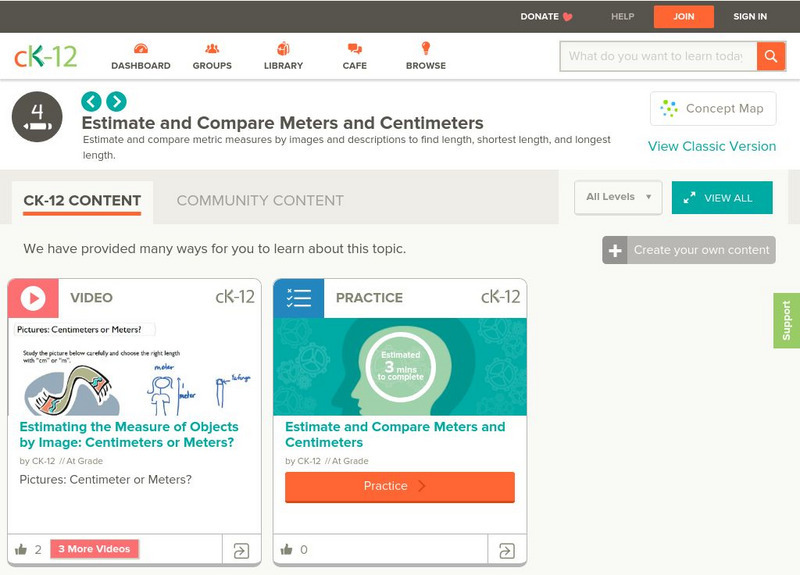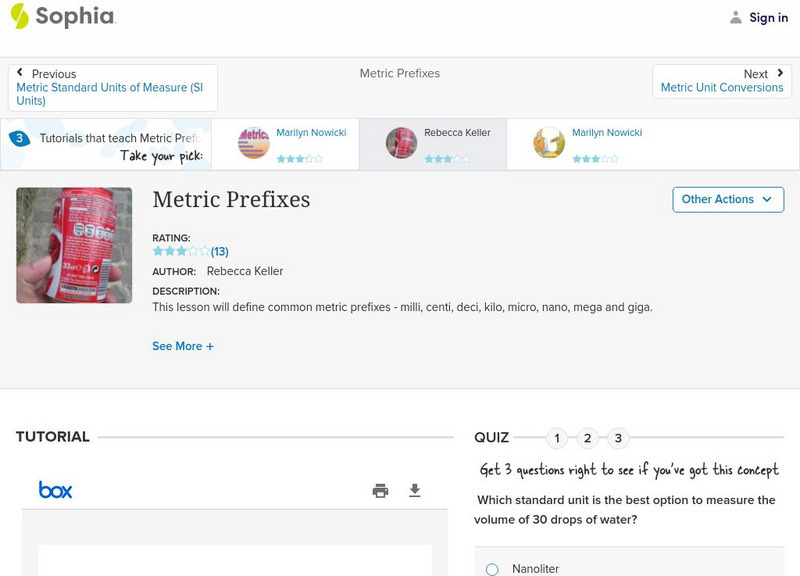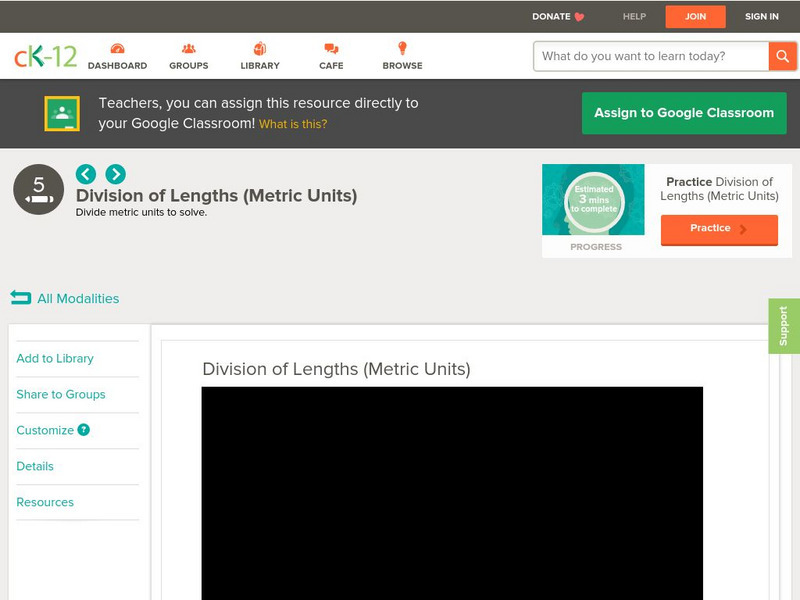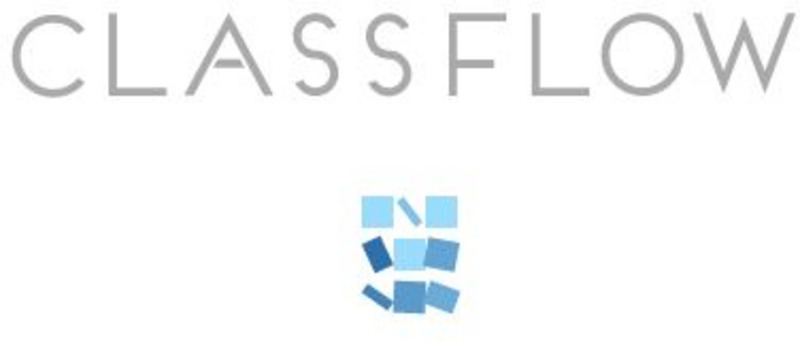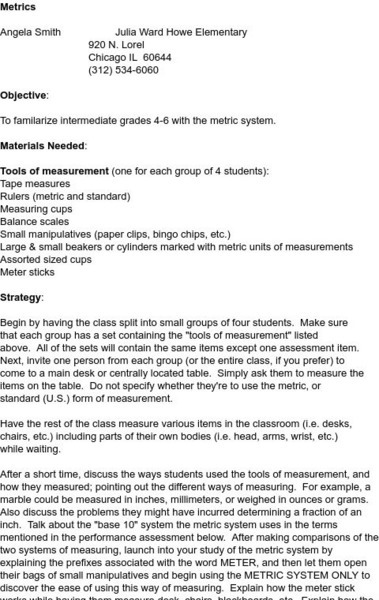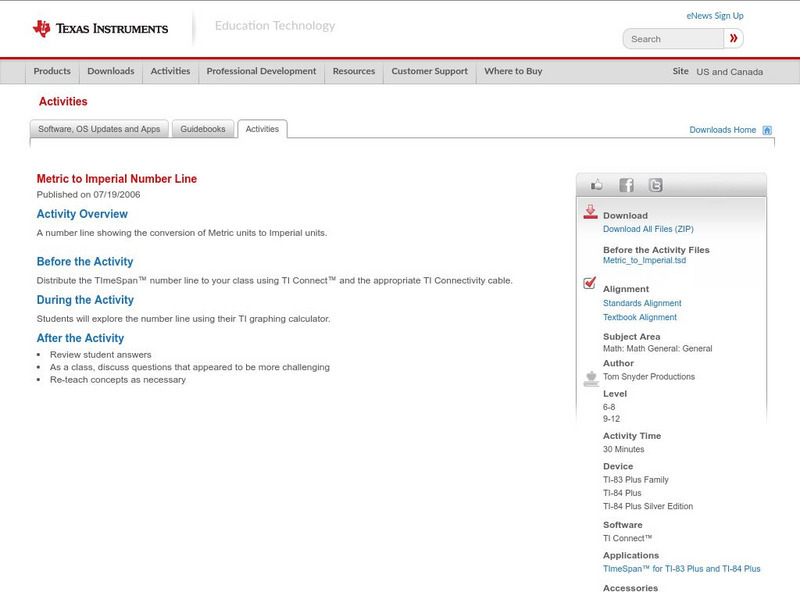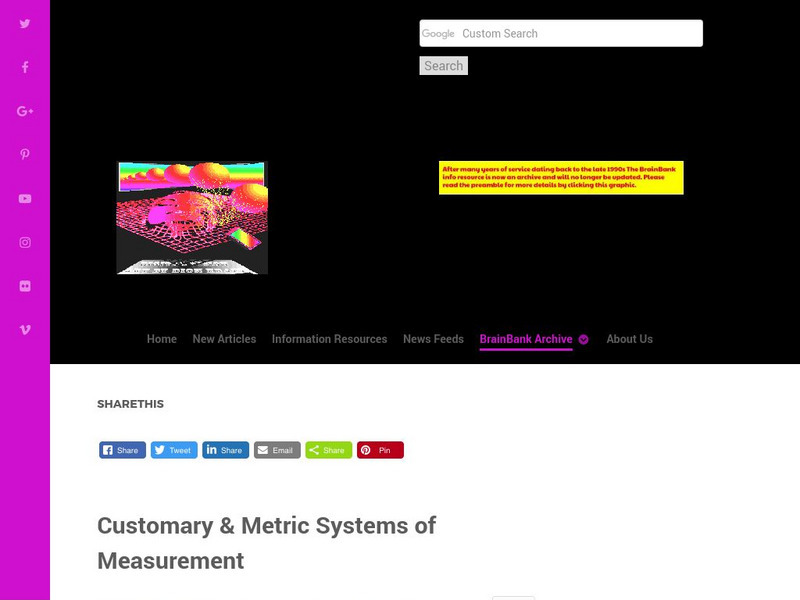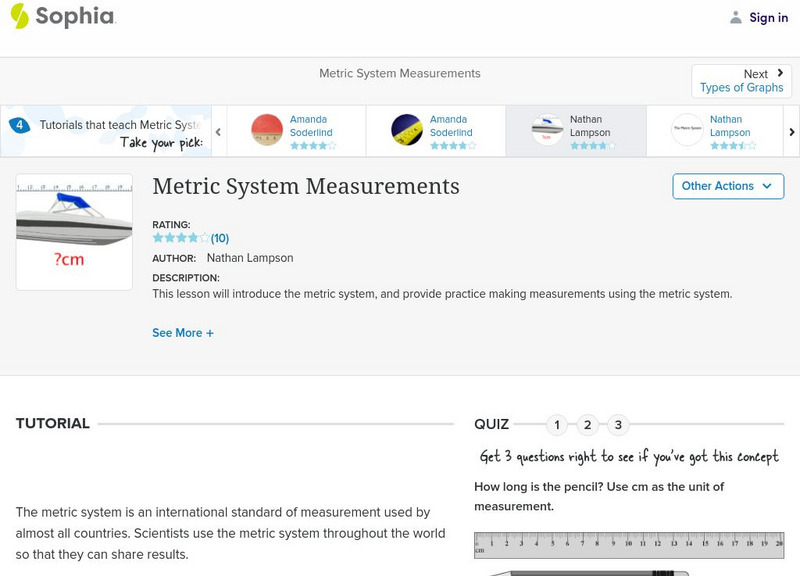Hi, what do you want to do?
CK-12 Foundation
Ck 12: Elem Math: Comparing Metric Measures by Description: Longest Length
[Free Registration/Login may be required to access all resource tools.] A practice quiz where students compare lengths in different metric units to identify the longest.
CK-12 Foundation
Ck 12: Elem Math: Comparing Metric Measures by Description: Shortest Length
[Free Registration/Login may be required to access all resource tools.] In this learning module, students compare lengths in different metric units to identify the shortest. Includes video demonstrating a sample problem. [1:57] A set of...
Mocomi & Anibrain Digital Technologies
Mocomi: The Metric System Part 2
Visual shows large and small numbers of the metric system.
Texas Education Agency
Texas Gateway: The Language of Physics: Physical Quantities and Units
By the end of this section, you will be able to associate physical quantities with their International System of Units (SI) and perform conversions among SI units using scientific notation; relate measurement uncertainty to significant...
Sophia Learning
Sophia: The Si System
A tutorial which introduces the International System of Units, and its use in making measurements during scientific investigation.
Sophia Learning
Sophia: Metric Prefixes
This brief slide show introduces some common prefixes for units of metric measurement.
Better Lesson
Better Lesson: Power to the 10! Conversions With the Metric System
Sixth graders will be using ratio tables to convert units of metric measurements and looking for patterns to help make the problems easier.
CK-12 Foundation
Ck 12: Elem Math: Division of Lengths (Metric Units)
[Free Registration/Login may be required to access all resource tools.] For this learning module, students are asked to divide a total length, height, or perimeter into equal parts. Includes video demonstrating a sample problem [0:37]...
ClassFlow
Class Flow: Converting Metric Measurement
[Free Registration/Login Required] Students will know: Customary and Linear Measurement Vocabulary, How to use the conversion table for customary and metric units of length to convert units of measurement, How to add and subtract units...
Science and Mathematics Initiative for Learning Enhancement (SMILE)
Smile: Metric System
This lesson plan familiarizes students in grades 4-6 with using the metric system and performing conversions.
Primary Resources
Primary Resources: Measures
A huge collection of teacher resources to aide in the teaching of all types of metric measurement: length, distance, mass, weight, capacity, and volume. Activities include measuring, estimating, converting, investigating, and finding...
CK-12 Foundation
Ck 12: Measurement: Metric Unit Length Conversions
[Free Registration/Login may be required to access all resource tools.] Convert metric units of length and round to a given place value.
Texas Instruments
Texas Instruments: Imperial to Metric Time Line
A number line showing the conversion of Imperial units to Metric units.
Texas Instruments
Texas Instruments: Metric to Imperial Time Line
A number line showing the conversion of Metric units to Imperial units.
ClassFlow
Class Flow: The Metric System
[Free Registration/Login Required] This flipchart is for discussion regarding use of metric system and conversions in chemistry. Includes links to websites for further discussion, to a Power Point Slideshow for teaching conversion, to a...
Cool Fire Technology
Customary & Metric Systems of Measurement Area Measure
Scroll down to the bottom of the page to view a table which lists measurement conversions for area.
Alabama Learning Exchange
Alex: Transform Me! Types of Energy
Students will understand the law of conservation of energy and the transformation of energy from one type to another.
Sophia Learning
Sophia: Metric System Measurements: Lesson 2
This lesson will introduce the metric system, and provide practice making measurements using the metric system. It is 2 of 4 in the series titled "Metric System Measurements."
Sophia Learning
Sophia: Metric System Measurements: Lesson 4
This lesson will introduce the metric system, and provide practice making measurements using the metric system. It is 4 of 4 in the series titled "Metric System Measurements."
Sophia Learning
Sophia: Metric Standard Units of Measure (Si Units): Lesson 5
This lesson will introduce standard units of measure (meters, grams, liters) and the physical properties they represent. It is 5 of 6 in the series titled "Metric Standard Units of Measure (SI Units)."
National Council of Teachers of Mathematics
The Math Forum: Intro to Measurement for Primary Students
This site from the Math Forum is a great introduction to measurement for primary students. Each measurement activity has four components: interactive, manipulative-based project; technology; paper/pencil practice; literature connection.
Other
St. James Public Schools: Measurements and Metrics
Test your knowledge of measurements and metrics by taking this ten-question self-scoring practice quiz.
Khan Academy
Khan Academy: Convert Units Word Problems (Metric)
Solve word problems that involve converting between metric measures of distance, volume, and mass, as well as measures of time. Students receive immediate feedback and have the opportunity to try questions repeatedly, watch a video or...
American Chemical Society
American Chemical Soc.: Best of Wonder Science: Measure Yourself in Metric [Pdf]
Activities where students take turns measuring their height, the width of parts of the hand, and the distance jumped using metric units.






